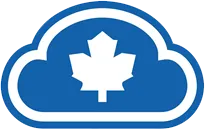Diagnosis and treatment of cough
By Canada Cloud Health | Published Thursday 18 February 2021

Your doctor will diagnose your cough based on your case-history that includes a thorough history, including smoking status, medication use, history of asthma (past and present), symptoms of allergic rhinitis, occupational exposures, evaluation of immunocompetence, current or recent respiratory tract infections.
Physical examination
The physical examination of the patient with cough may demonstrate clinical signs of obstructive lung disease, lung cancer, bronchiectasis, pulmonary fibrosis or cardiac failure.
- Nose: evaluate for pale and swollen turbinates as indicators of allergic rhinitis.
- Throat: evaluate for cobblestone appearance of oropharyngeal mucosa and mucus in the oropharynx and enlarged tonsils.
- Respiratory: evaluate for expiratory wheezes and/or wheezing (asthma), bilateral rhonchi or crackles (may suggest bronchiectasis).
- Extremities: clubbing and cyanosis.
Laboratory diagnosis
- Chest radiograph - It is mandatory at an early stage as a significant abnormality will alter the diagnostic algorithm and avoid unnecessary investigation.
- Spirometry and peak expiratory flow measurements over several days- When available, spirometry both before and after an inhaled bronchodilator should be performed at an early stage in the routine diagnostic testing for all patients with cough. If Spirometry is not readily available in primary care and peak flow meters should be used as an alternative,
- Bronchoprovocation testing with methacholine or histamine- If doubt remains about the diagnosis of asthma, bronchoprovocation testing should be considered.
- 24 hour esophageal pH measurement and esophageal manometry: determination of GERD
- Rhinosinus imaging (radiography or computed tomography (CT)
- Lung volumes: determination of air trapping (obstructive lung disease) or airway restriction (interstitial lung disease).
- Diffusion capacity for carbon monoxide: to distinguish airway obstruction from asthma versus COPD
- Computed tomography (CT) of the lungs.
- Fibre-optic bronchoscopy and mucosal biopsies.
- Induced sputum for examination of eosinophils.
Treatment of cough
- Acute cough: Acute cough rarely requires therapy. It is usually associated with the common cold, but occasionally it can be associated with potentially life‐threatening conditions (e.g. pulmonary emboli, congestive heart failure).
- Subacute cough: Treatment of subacute involves empiric therapy for the most common causes, treating one potential cause at a time. The initial step in determining treatment for subacute cough is to check the cause of cough is because of any respiratory infection or something else. If there is a concern for Bordetella pertussis (i.e. whooping cough), a nasopharyngeal swab for culture should be performed.
- If positive, treatment involves use of macrolide antibiotic. In some patients with cough that persists after a respiratory tract infection, treatment with an inhaled corticosteroid for 30 days should be considered. If the cough is not likely post‐infectious, management should be the same as for chronic cough.
- Chronic cough: may be caused by more than one condition. If the cause is not established from history of patient, then a sequential and empiric treatment approach is recommended, in which following medications are given.
- Symptomatic treatment (only after consideration of cause of cough) - Antitussive and protussive therapy is used to treat cough involves the use of non-specific therapies, which suppress cough or help in mucus thinning and expulsion and mucus clearance.
- Treatment of the causes of cough may include anti-inflammatory drugs in case of cough due to eosinophilic inflammation in the respiratory tract, asthma, or eosinophil bronchitis.
- Inhaled corticosteroids are also effective (e.g. Trelegy Ellipta).
- The treatment of cough associated with GERD involves medications like acid suppressants such as histamine H2-receptor antagonists or Proton pump inhibitors.
- For wet cough, medications such as mucolytics and expectorants can help remove mucus from the lungs. Antibiotics can help treat bacterial respiratory infection.
- If cough does not improve with the specific therapy, treatment of the next potential cause should be pursued.
Home remedies for cough
Ample rest and plenty of fluid intake is generally advised. Avoid exposure to polluted air and allergens.
Natural remedies for cough that can be tried to relieve the symptoms include:
- Hot milk with pinch of Black Pepper powder
- Decoction of Long Pepper
- Ginger and Holy basil leaves
- Paste of Ginger, Betel Leaves and Honey
- Hot milk with Black Pepper, Turmeric, and Honey
- Mixture of Ginger paste and Honey
Honey is the best-known home remedy for dry cough as well as wet cough. It acts as soothing agent for throat and relieve nocturnal cough, allowing proper sleep.



 Canadian Company
Canadian Company 



 Sign In
Sign In
 Home
Home 
 About Us
About Us 
 How to order
How to order 
 Products
Products 



